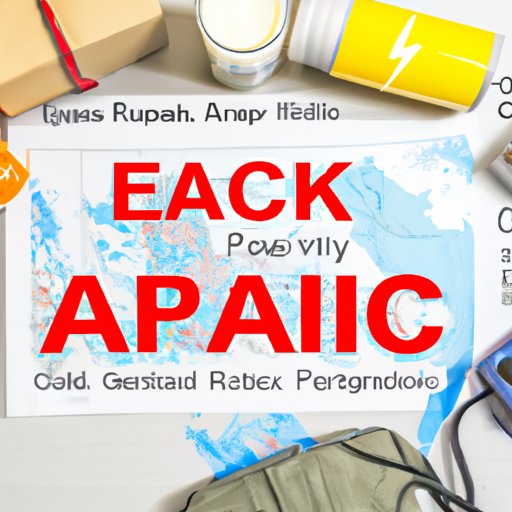Introduction
An earthquake is defined as a sudden movement of the earth caused by the abrupt release of energy within the Earth’s crust. Earthquakes can cause great destruction to buildings, roads, bridges, and other structures. That’s why it’s so important to be prepared for an earthquake before it strikes.

Create an Earthquake Preparedness Plan
The best way to prepare for an earthquake is to create an earthquake preparedness plan. This plan should identify safe locations in the home, teach appropriate responses for different types of structures, and make sure you have an emergency kit ready.
When creating an earthquake preparedness plan, first identify the safest locations in your home. According to the American Red Cross, the safest place during an earthquake is an interior room without windows. If you are in bed when the shaking starts, stay there and cover your head with a pillow.
It’s also important to learn appropriate responses for different types of structures. For example, if you are in a high-rise building, move away from windows and go to an interior hallway or stairwell. If you are outdoors, move to an open area away from buildings, trees, and power lines. If you are in a car, pull over and stop.
Finally, make sure you have an emergency kit ready. Your kit should include items such as food, water, flashlights, a first aid kit, and extra batteries. It should also include important documents such as birth certificates, insurance cards, and passports.

Protect Yourself During an Earthquake
Once an earthquake starts, it’s important to take the necessary steps to protect yourself. The most important step is to “Drop, Cover and Hold On,” meaning you should drop down onto your hands and knees, cover your head and neck with one arm, and hold on to something sturdy until the shaking stops.
It’s also important to stay away from windows, furniture, and heavy objects that could fall on you. If you can safely move to a better location, do so, but be careful not to run outside or into an area where there may be more danger.
Stay Informed About Earthquakes in Your Area
In order to be prepared for an earthquake, it’s important to stay informed about earthquakes in your area. One way to do this is to sign up for local alerts, which will notify you when an earthquake has occurred. You can also monitor news sources for updates and become familiar with your community’s emergency plan.
It’s also important to educate yourself and your family about earthquake safety. The American Red Cross offers free online courses that cover topics such as preparing for an earthquake, identifying safe locations in the home, and protecting yourself during an earthquake.
Conclusion
Earthquakes can cause great destruction and it’s important to be prepared. The best way to prepare is to create an earthquake preparedness plan, which should include identifying safe locations in the home, learning appropriate responses for different types of structures, and making sure you have an emergency kit ready. During an earthquake, it’s important to “Drop, Cover and Hold On” and stay away from windows, furniture, and heavy objects. Finally, it’s important to stay informed about earthquakes in your area by signing up for local alerts and becoming familiar with your community’s emergency plan.
By following these steps, you can stay safe during an earthquake. So remember to stay informed and prepared.
(Note: Is this article not meeting your expectations? Do you have knowledge or insights to share? Unlock new opportunities and expand your reach by joining our authors team. Click Registration to join us and share your expertise with our readers.)
